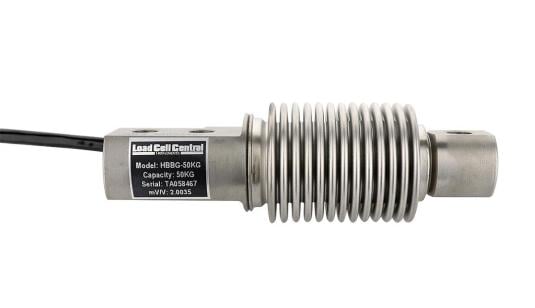Bending Beam Load Cells: Principles, Mechanics, and Applications
January 27, 2025

A bending beam load cell is a force measurement device widely used in various industries for its accuracy and reliability. These load cells operate based on strain gauge technology, where the deformation of a metal beam under an applied load results in a measurable electrical signal.
This blog explores the working principles of bending beam load cells, their operational mechanics, and their diverse applications—from industrial weighing systems to medical devices—emphasizing their importance in modern measurement technologies.
What Is a Bending Beam Load Cell?
A bending beam load cell is a type of force sensor designed to measure weight or force by detecting the bending deformation of a beam under load. The construction typically involves a slender metal beam with strain gauges attached, which measure changes in electrical resistance as the beam bends. This design allows for high accuracy and reliability across various applications.
Key features of bending beam load cells include their compact size, versatility in low-capacity measurements, and suitability for both single-ended and double-ended configurations. These characteristics make them ideal for industrial scales, medical devices, and packaging machinery.
How Does a Bending Beam Load Cell Work?
Bending beam load cells operate based on strain gauge technology, measuring force or weight by detecting the deformation of a beam under load. When force is applied, the beam bends, causing the strain gauges attached to its surface to change their electrical resistance. This change is proportional to the applied load and is converted into an electrical signal using a Wheatstone bridge circuit.
- Beam: The main structure that bends under load.
- Strain Gauges: Sensors that detect changes in resistance due to bending.
- Load Application: The force applied, typically at one end of the beam.
- Signal Processing: The conversion of resistance changes into a measurable electrical output.
Bending Beam Load Cell Principle
Bending beam load cells operate on the principle of mechanical deformation. When a force is applied, the beam bends, causing the strain gauges affixed to its surface to deform. This deformation alters the electrical resistance of the strain gauges, generating a measurable electrical signal proportional to the applied load. A common configuration used is a Wheatstone bridge, which enhances measurement accuracy by compensating for temperature variations and other potential errors.
Key factors influencing measurement accuracy include material properties (e.g., elasticity), beam shape (which affects deflection), and strain gauge placement (for optimal sensitivity). Proper calibration and consideration of environmental factors are also crucial for ensuring precise measurements in various applications, such as industrial scales and medical devices.
Applications of Bending Beam Load Cells
Bending beam load cells are widely used across various industries due to their versatility and accuracy. Common applications include:
- Platform Scales: Used for weighing large items in industrial settings.
- Bench Scales: Ideal for smaller, portable weighing tasks in laboratories and retail environments.
- Medical Equipment: Integrated into devices like infusion pumps and patient lifts, ensuring safety and precision.
- Material Testing: Used in testing machines to measure material strength and durability under different loads.
- Industrial Automation Systems: Important for monitoring forces in robotic arms and machinery, enhancing control and efficiency.
These load cells are especially valuable in manufacturing, agriculture, food processing, and healthcare, providing reliable measurements even in harsh environments.
Advantages of Bending Beam Load Cells
- Cost-Effective: Affordable and versatile, making them suitable for various applications.
- High Accuracy and Stability: Reliable performance across diverse environments.
- Easy Integration: Simple to integrate into a variety of systems.
- Durability: Robust design, ideal for heavy-duty applications.
How to Choose the Right Bending Beam Load Cell
When selecting a bending beam load cell, consider the following key factors:
- Load Capacity: Ensure the load cell can handle the maximum expected load, with a safety margin for accuracy.
- Accuracy and Sensitivity: High sensitivity is essential for precision applications, while overall accuracy affects measurement reliability.
- Environmental Conditions: Assess the operating environment. Bending beam load cells are suitable for controlled settings, while shear beam load cells might be better for more demanding conditions.
- Mounting Compatibility: Ensure the load cell's design matches your mounting method to prevent measurement errors.
- Output Signal Compatibility: Verify that the load cell's output matches your system's signal processing requirements for accurate data interpretation.
Why Choose Bending Beam Load Cells for Accurate and Reliable Measurements?
Bending beam load cells operate on the principle of mechanical deformation, converting applied force into an electrical signal through strain gauges. Their compact design and high accuracy make them suitable for a wide range of applications, including industrial weighing, medical devices, and packaging machinery. They are favored across industries due to their reliability, cost-effectiveness, and versatility in various environments. For businesses seeking precise weight measurements, bending beam load cells offer a dependable solution.
For expert advice and assistance in selecting the right load cell for your needs, contact Load Cell Central today! Our customer service team is ready to assist you with expert advice and step-by-step guidance.